-
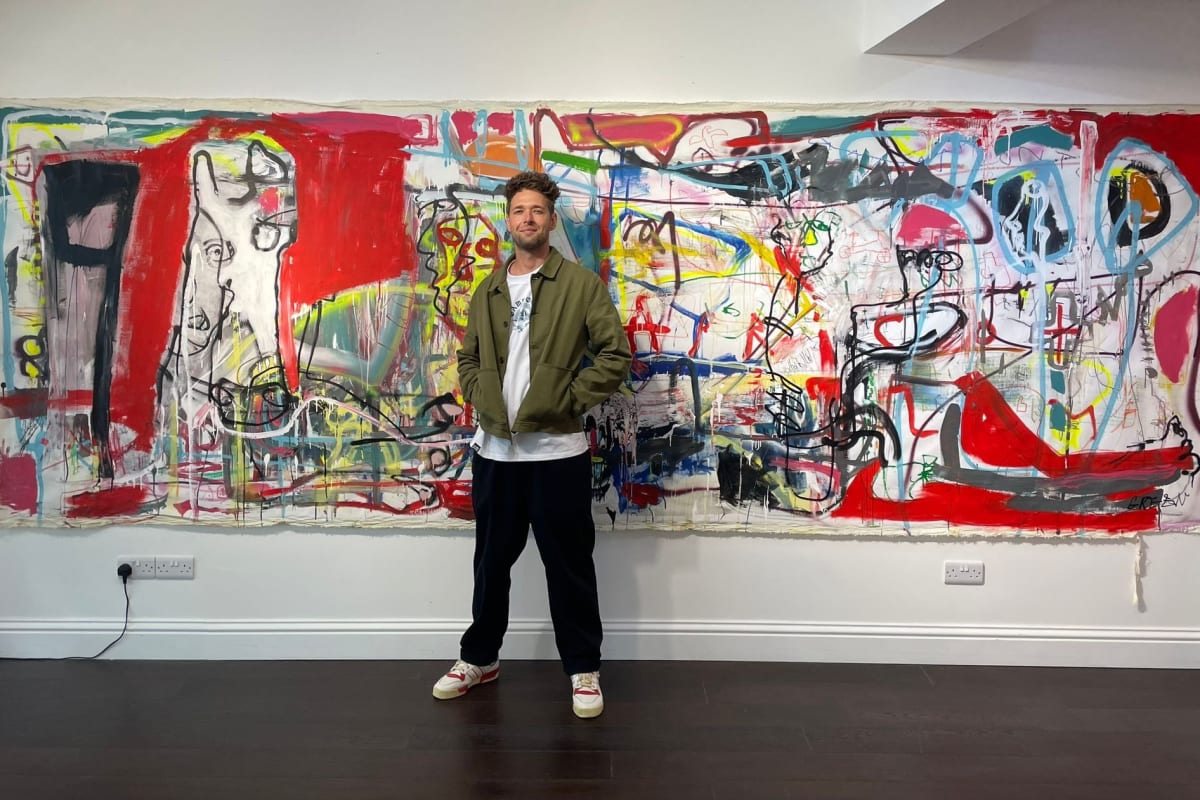
By Alex Samsa
James Green, recognized for his distinctive artistic approach, transcends the mere representation of individuals by delving into the essence of their being. Through defying categorization he allows his work to manifest naturally across diverse forms, techniques, and processes. His practice is not bound by conventional constraints; instead, it thrives on the freedom to explore and innovate.
Green allows his life to guide the path for his practice, letting context come though naturally and authentically. Grounded in the realities of contemporary society, his works serve as poignant reflections on pressing societal issues. Rejecting the confines of traditional hierarchies, Green's work revels in its physicality, showcasing thick impasto and bold colour palettes. Through his bold aesthetic choices, Green challenges conventional notions of beauty, presenting a raw and unfiltered portrayal of the human experience.
In essence, James Green's art transcends mere representation; it serves as a mirror reflecting his innermost thoughts, emotions, and convictions. Through his unwavering commitment to authenticity, he invites audiences to engage in a dialogue that transcends the boundaries of art, inviting contemplation and introspection.
-
The late, great Terry O'Neill chronicled the frontline of fame, photographing the celebrities and public figures that defined each era. He captured the stars of the swinging 60s and created some of the most iconic magazine cover photos of all time for the likes of Vogue and Rolling Stone Magazine. Here, we take a look back at three of O'Neill's most iconic shots.
Faye Dunaway, 1977
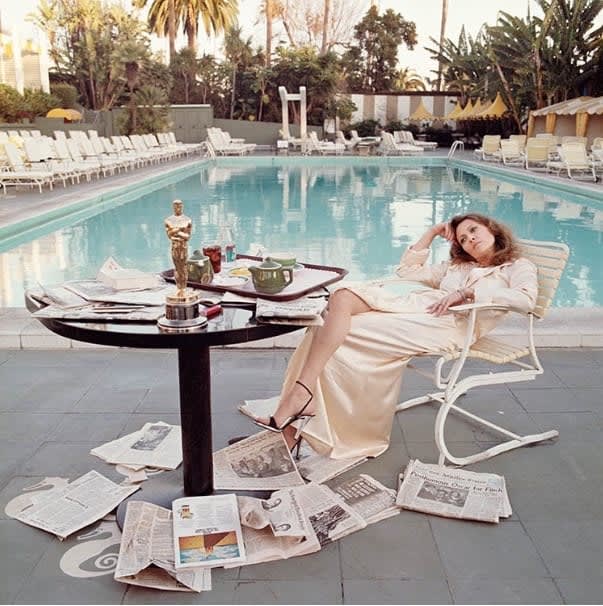
This iconic shot was taken in March 1977 at The Beverley Hills Hotel and is probably O’Neill’s best-known work. Dunaway had just won the Best Actress Academy Award for her role in ‘Network’. She had previously been nominated in 1967 for ‘Bonnie and Clyde’ and in 1974 for ‘Chinatown’.
Dunaway was O’Neill’s girlfriend at the time and they later went on to marry.
O’Neill said of the portrait: “I call this picture ‘The Morning After’. I wanted to get a different kind of ‘Oscar’ picture – one to illustrate what the award meant to actors and actresses. Funny (sic) enough, I was photographing her on an assignment for People Magazine at the time — they always did a piece on the girl they think is going to win. Anyway, they picked Faye Dunaway, and while we were doing the pictures, I said to her, ‘I’ve been to the Oscars before. If you win, they always take the same pictures of you receiving the statue in the press room.’ I knew that wasn’t the real story — the real story is the next day, when they realize suddenly they’re getting all these offers to do films, their value goes from $100,000 to $10 million, and they’re just sort of stunned. I wanted to capture that, so I told her my idea, and she was sport enough to do it early in the morning at the Beverly Hills Hotel. She got up at 6 a.m., and we got that great picture. She hadn’t slept and the implications of a watershed event in her career were only just beginning to dawn on her. It’s become one of the most Hollywood pictures of all time”.
Vanity Fair said: "No image better captures both the allure and the loneliness of celebrity than Terry O'Neill's 1977 photograph of his then girlfriend Faye Dunaway reflecting by the pool of the Beverly Hills Hotel, the Academy Award she won the previous night posing on the breakfast table."
Terry O'Neill is among the most sought-after artists in the UK and his works are highly collectable.
Frank Sinatra, 1968
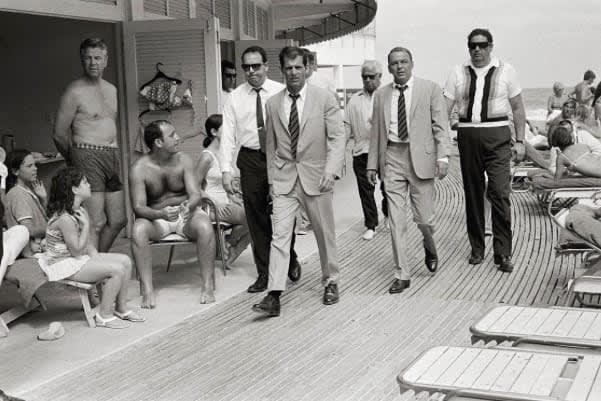
This iconic shot captures Frank Sinatra arriving with his entourage, including his stand-in identically dressed, at Miami Beach in 1968. Sinatra was there filming ‘The Lady in Cement’.
O’Neill said of the shoot: "I got friendly with Ava Gardner…I told Ava, one day I'd love to get a chance to photograph your ex-husband (Sinatra). So she writes me this letter, [and] I'm waiting for Frank to come onto the set.. and he comes around the corner with about 4, 6 bodyguards and I suddenly realized what a giant of a man that he was. This was my first view of him and I handed him the letter and he read the letter, he said right you're with me, then he totally ignored me for the next three weeks. Which I realized now, or shortly afterwards, that he was giving me the biggest gift that anybody could give anybody. Because I could go anywhere with him, he didn't even acknowledge the fact that I was there, and I realized the secret of great photography is to fade into the background and make yourself, sort of, as invisible as possible. And that was sort of my first major lesson in taking good pictures.”
Sean O’Hagan, Photography Specialist for The Guardian says of the image:
“The photograph's power resides in its ability to capture Sinatra's presence: the Sopranos-style minders, the look of admiration from the seated man on the left, the way the singer – and his double – both stare hard at the camera, neither offended nor surprised by it. (O'Neill had been introduced to Sinatra by Ava Gardner and was granted unprecedented access to the star.) It dramatises the darker side of Sinatra, a performer whose business interests were allegedly mixed up with the mafia for most of his career, and whose shadier connections were constantly monitored by the FBI”
Brigitte Bardot

This iconic shot was taken in 1971 in Spain on the set of ‘Les Petroleuses’ a.k.a. ‘The Legend of Frenchie King’. It is one of O’Neill’s best-known images.
O’Neill said of the portrait: “I had been hired to get publicity images from the set (of ‘Les Petroleuses' a.k.a. 'The Legend of Frenchie King'). I had photographed Brigitte before, although we never really became friends. She had a stature and a presence that were extraordinary. I found a spot some distance away from her. The wind was blowing, and she had a cigar as part of a scene. I was surrounded by hundreds of people, and was praying they didn't move or jostle me, as I had this perfect composition. I just wanted the wind to blow once more – and it did. Then everyone started pushing and shoving and I lost the place – but I knew I had that frame. It was a picture in a million”.
The shot has been used on several magazine covers around the world.
-
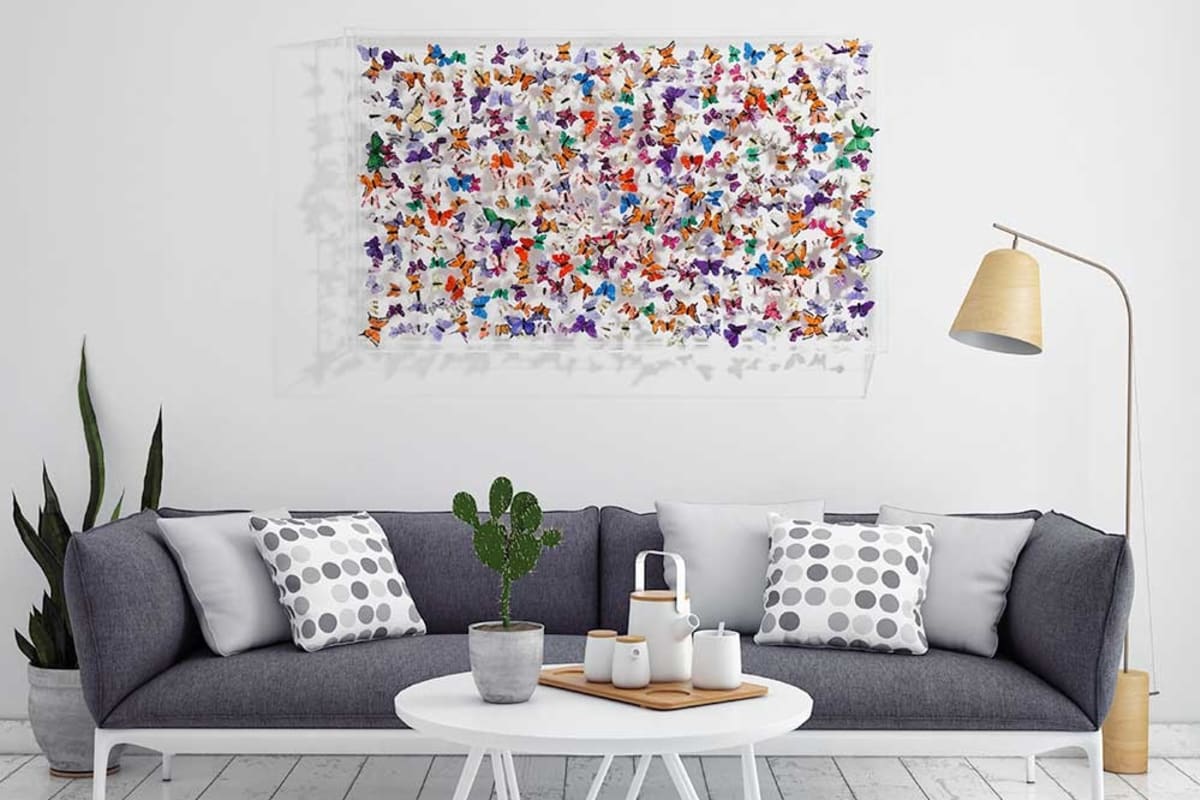
Michael Olsen is one Britians leading lepidopterogical artists. His hand painted butterflies on feathers stand out as truly unique and beautiful works of art.
Inspired by the Butterfly Domes of the Victorian era Olsen has created pieces that embody that style, but with a contemporary twist. His butterflies are encased within a box of acrylic, giving the impression that they are floating in space. Olsen, in his work is able to bring the beauty and colour of nature into people's homes.
Olsen has had a life-long fascination for nature and especially butterflies. He admits that he finds the moment when a butterfly stops to let an onlooker admire it's form utterly captivating. His work is an attempt to recreate this experience. Bring one fleeting moment of unity with a creature to life in ways that can't be imagined. His pieces are both large enough, and hold within them enough detail for them to be admired on a daily basis, but yet always find something new, to find within his work a new story. This, it can be said, is indicative of nature itself, where even if one looks into the same garden every day, there will always be something new to see if one takes the time to really observe.
Olsen's previous work was in retail, but spent a great deal of his time creating things simply for his own pleasure, or for a practical purpose. He has now embraced his artistic impulses and has set out on a new venture, turning what once was a hobby into a new and exciting journey of artistic expression and discovery. -
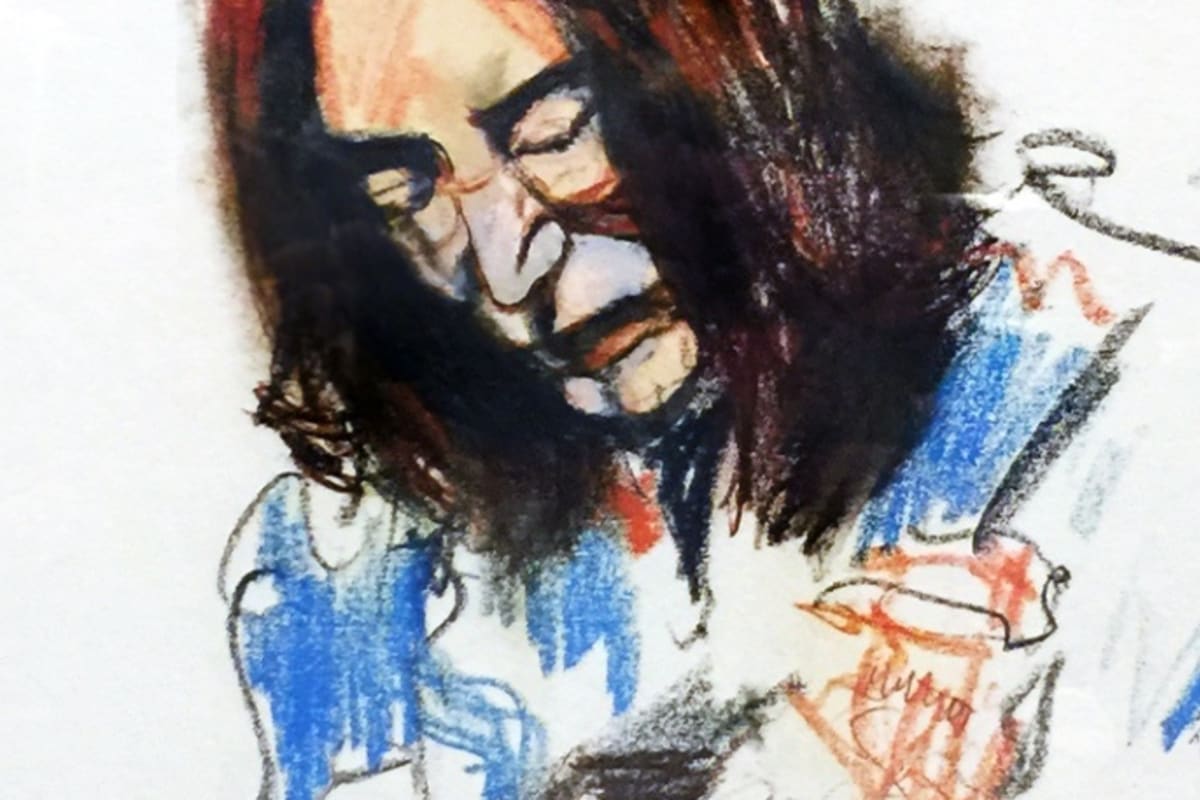 John, 2002
John, 2002Ronnie Wood
The Artist Behind the GuitarRonnie Wood is a man of many talents, primarily known for being one quarter of The Rolling Stones the English musician and songwriter has enjoyed a life in the limelight. But it was from this very fame that Wood used painting to escape from. Using his talents he developed while receiving a formal art training at The Ealing School of Art he found a peaceful solace in his painting, a creative outlet away from the scrutiny of the press who often commented on his lifestyle.
-
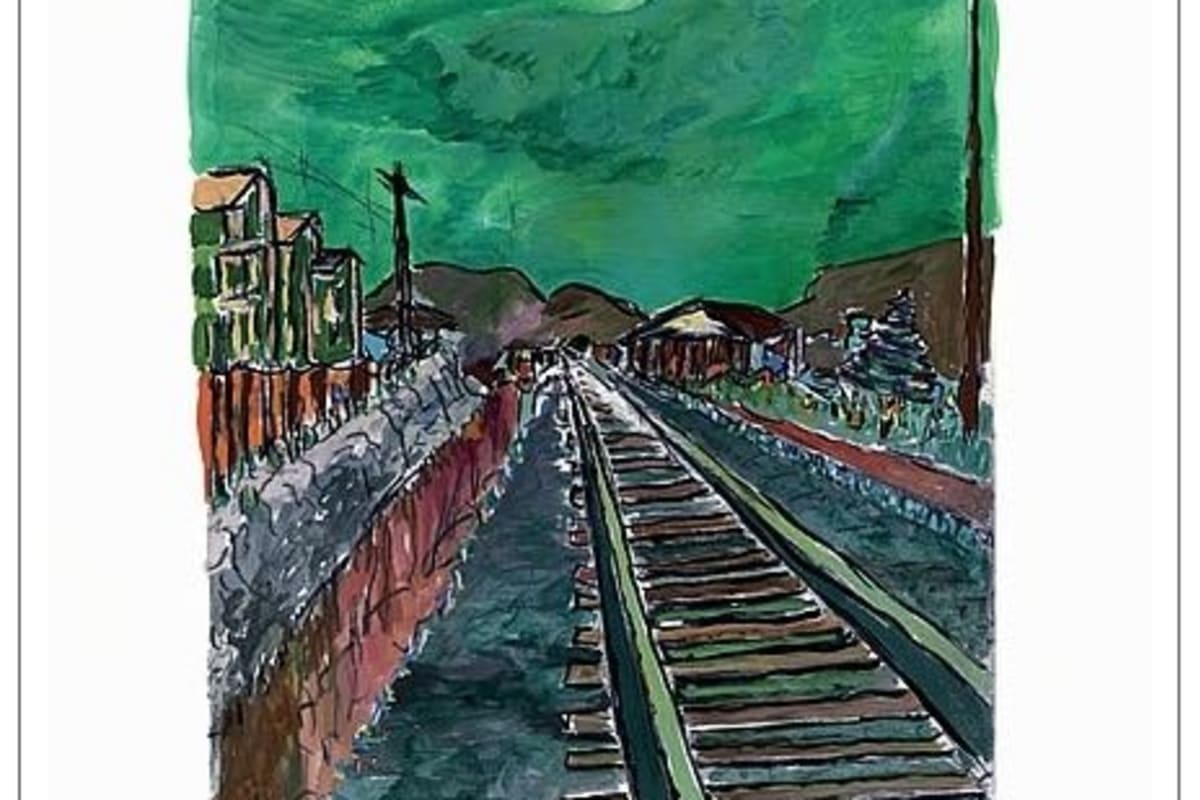
Bob Dylan - Train Tracks
Why Train Tracks is Bob Dylan’s most popular workTrain Tracks was part of the original collection of paintings by Bob Dylan entitled Drawn Blank. The paintings derive from sketches he made whilst on tour in the 80s and 90s and were first exhibited in Germany in 2007. This exhibition marked the first time legendary musician Dylan had publicly shown a major body of artwork.